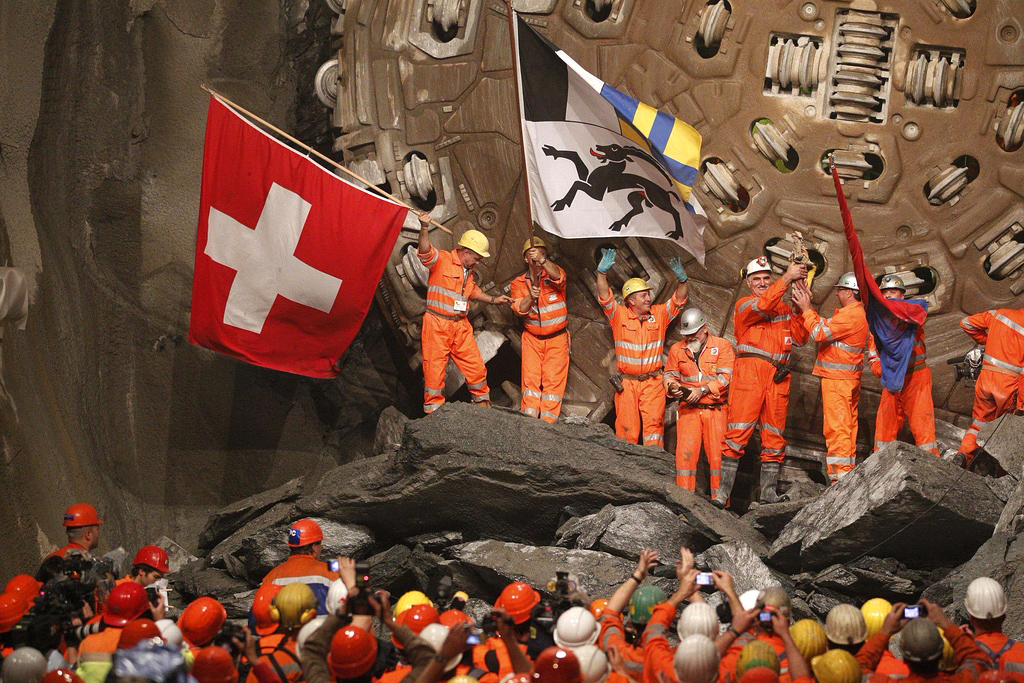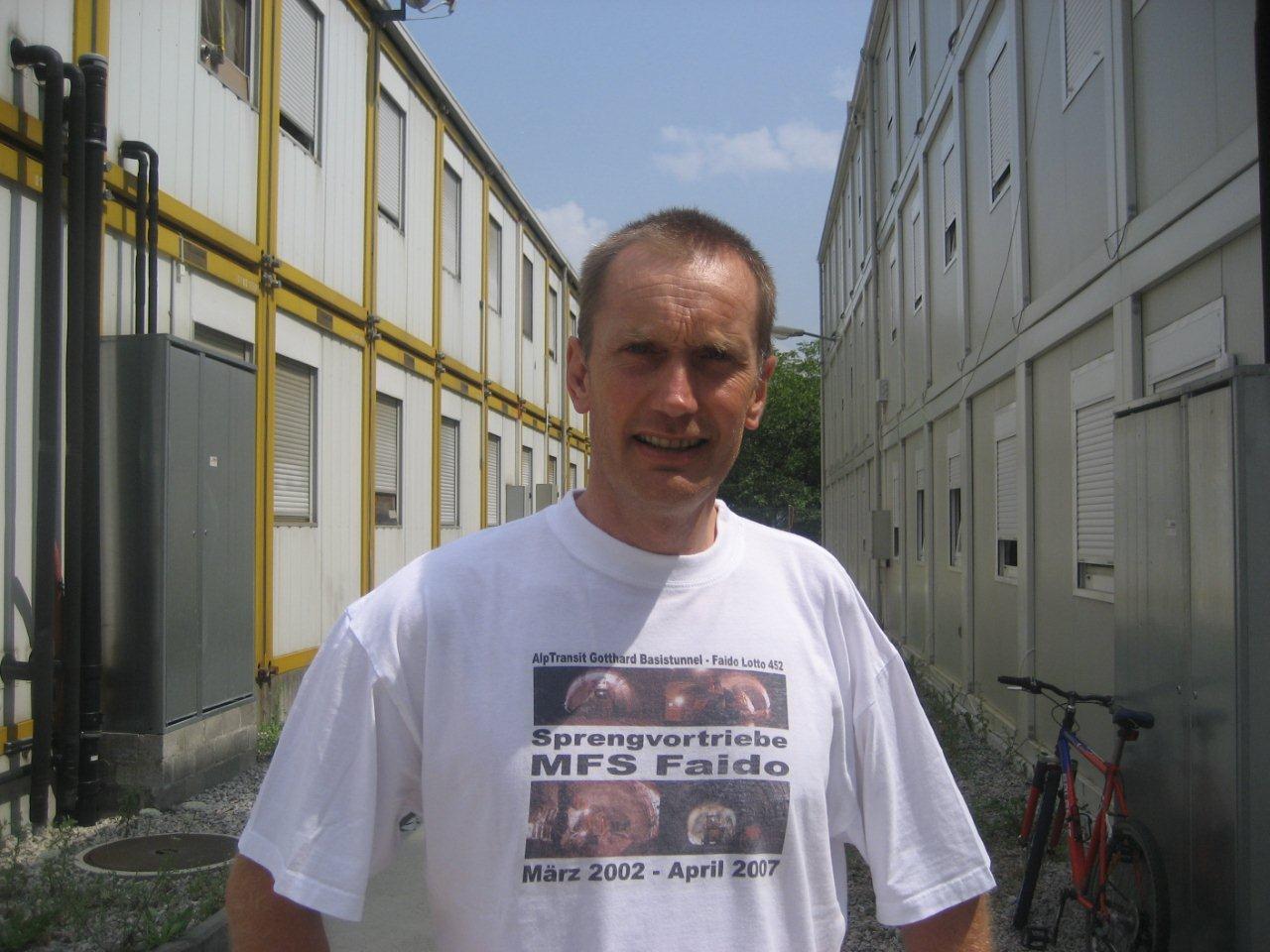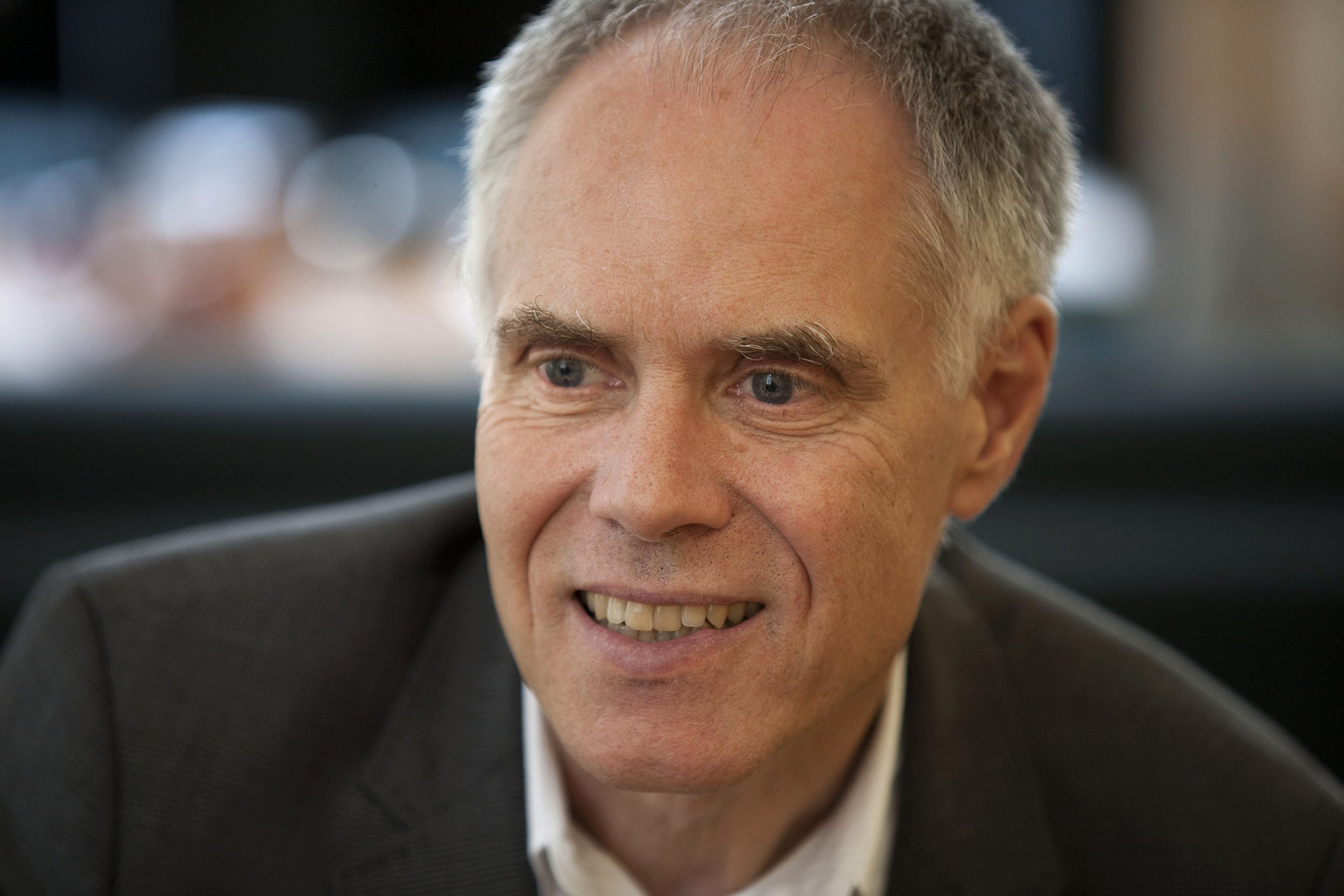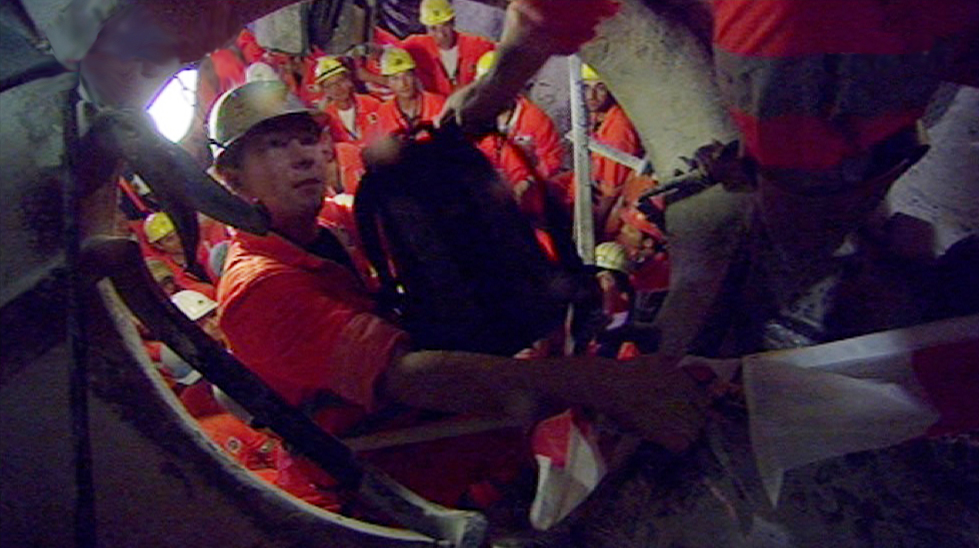Switzerland has its record-breaking tunnel

Miners have bored through the last 180cm of rock to pierce the Gotthard Base Tunnel – to much jubilation and celebration.
The rail tunnel that goes through the Gotthard massif in southern Switzerland is now the world’s longest at 57 kilometres.
The massive tunnel boring machine 800 metres deep in the east tunnel started up at 2pm. Approaching from Faido with a great rumble, “Sissi”, as the TBM is known, smashed through into the Sedrun side of the tunnel to cheers and applause around 17 minutes later.
Huge blocks of grey stone fell to the ground amid clouds of dust, as the drill head, which totally filled the hole, made its appearance.
Afterwards foreman Eduard Baer, clutching a statue of Saint Barbara, the patron saint of miners, climbed through a manhole in the machine from the Faido side and shook hands with a colleague on the Sedrun side.
A Swiss flag was then unfurled as were those of the cantons affected by the tunnel. More miners followed, some with flags of their own nations, and there were shouts of joy, as well as fireworks and music.
“This is the most wonderful moment in my 36 years of tunnel building,” Baer said, echoing the pride felt by the assembled miners.
Friday’s special breakthrough ceremony started at 1pm with a visual and sound spectacle by theatre director Volker Hesse.
Heroes
In a speech to assembled guests and the media, the boss of the contractor AlpTransit, Renzo Simoni – like everyone present, clad in a hard hat – said that the miners were the real heroes of the day.
He reminded the crowd that not all of them were able to take part on Friday, citing the eight deaths during the tunnel building work.
For his part, Transport Minister Moritz Leuenberger declared: “together we dared to achieve something great”.
“Yesterday we sought to move mountains. Today we have bored right through and created the world’s longest tunnel.”
He added that the project was both on time and on budget. The tunnel was then given a religious blessing before the huge machine was started up.
Europe was watching
Apart from Leuenberger, also witnessing the event were the European Union ambassador to Switzerland Michael Reiterer and the head of the Swiss Federal Railways, Andreas Meyer.
Although no European transport ministers are present, most followed the breakthrough live in Luxembourg, where they are attending a meeting.
EU transport commissioner Siim Kallas has called the tunnel a “remarkable project” and ministers congratulated Switzerland on its achievement via a television link-up.
A visibly emotional Leuenberger thanked them, saying that tears had come to his eyes because “decades of hope and the voters’ dreams had finally come to fruition”.
He added that he hoped that the Gotthard tunnel would gain some European brothers.
For Leuenberger, who retires at the end of October, the Gotthard tunnel – which is due to open to rail traffic in 2017 – has been one of the crowning achievements of his 15 years as transport minister.
He told swissinfo.ch in an interview beforehand that the tunnel was of immense importance for Switzerland and had made a large contribution to the building of European infrastructure. But he added that the huge undertaking had been a risky venture.
“During these 15 years in which I defended the project in parliament, there were always malicious, doubting voices who predicted that it wouldn’t succeed,” he said.
“A tunnel is only built after the breakthrough. Before that there are very many geological risks. We very clearly warned people about this before the referendum and voters still said yes.”
International importance
The Gotthard Base Tunnel will be the most important element of the new flat rail link through the Alps. Rising no higher than 550m above sea level, it will reduce the route from Zurich to Milan by one-and-a-half hours. It is also a cornerstone of the policy to move freight in particular from road to rail.
Voters approved the concept and the financing of the tunnel in the 1990s.
The base tunnel is expected to open, once fully equipped, in 2017, but AlpTransit has suggested that it may even be ready by the end of 2016.
In total, an estimated 24 million tonnes of rock have been excavated – the equivalent of five times the volume of the Great Pyramid of Giza. The total cost of the project is SFr9.74 billion ($10.1 billion).
As Leuenberger pointed out, the tunnel has had plenty of detractors. And indeed it hasn’t all been plain sailing.
Overcoming problems
The Alps’ varied geology in particular posed a problem. The Piora Fault Zone’s poor quality rock threatened to put the whole project on hold until engineers discovered better layers deeper below. Crumbly rock north of Sedrun was overcome using mining technology.
Although there were some negative headlines in the run-up to the breakthrough – with the Tages-Anzeiger newspaper reporting calls for an extra SFr350 million for the project or that there had been problems with faulty drainage pipes – excitement was high.
Around 3,500 people, locals and those involved, were watching the breakthrough from various locations. The public could follow via a television live link, including on swissinfo.ch. In addition, more than 300 members of the Swiss and international media were present.
In particular, members of the Japanese press were on hand to witness the event, as the Gotthard Base Tunnel has now taken over the world record from the Japanese Seikan tunnel (53.85 km).
1947: Carl Eduard Gruner, an engineer and urban planner from Basel, puts forward the idea of a base tunnel under the Gotthard.
1962: First project for a tunnel between Amsteg and Giornico.
1971: The government asks the Swiss Federal Railways to come up with a project to be presented in 1975.
1990: The government puts forward the “network variant” which foresees the construction of base tunnels at Lötschberg and the Gotthard.
1992: In a referendum, 63.6 per cent of Swiss voters approve the construction of the New Rail Link through the Alps (NRLA) with the two base tunnels.
1994: The Alps Initiative is accepted by 52 per cent in a referendum. This foresees moving freight from road to rail and the protection of the Alps is included in the Swiss constitution.
1998: The people and parliament approve the financing of the NRLA project. Swiss Federal Railways founds the contractor AlpTransit Gotthard Ltd.
1999: After preliminary work, excavation starts on both the Gotthard and Lötschberg tunnels.
2007: The Lötschberg tunnel opens (34.6km).
2010: The final breakthrough of the Gotthard Base Tunnel (57km).
2017: Expected opening date of Gotthard rail tunnel to traffic.
The Gotthard Base Tunnel (ready 2016-17) and Ceneri Base Tunnel (ready 2019) create an ultramodern flat rail link whose highest point is at 550 metres above sea level. This is much lower than the highest point of the existing route through the mountains at 1,150 metres.
The route through Switzerland becomes flatter and 40km shorter, so faster for passengers. Freight trains travelling on the flat route can be longer and pull up to twice today‘s weight – 4,000 tonnes instead of 2,000 tonnes. They will be up to twice as fast.
These two tunnels, plus the Lötschberg base tunnel (opened 2007), are the key elements of the NRLA (New Rail Link through the Alps).
The NRLA is one of the world’s largest construction projects and includes the extension of two North-South railway lines through Switzerland.

In compliance with the JTI standards
More: SWI swissinfo.ch certified by the Journalism Trust Initiative





You can find an overview of ongoing debates with our journalists here. Please join us!
If you want to start a conversation about a topic raised in this article or want to report factual errors, email us at english@swissinfo.ch.